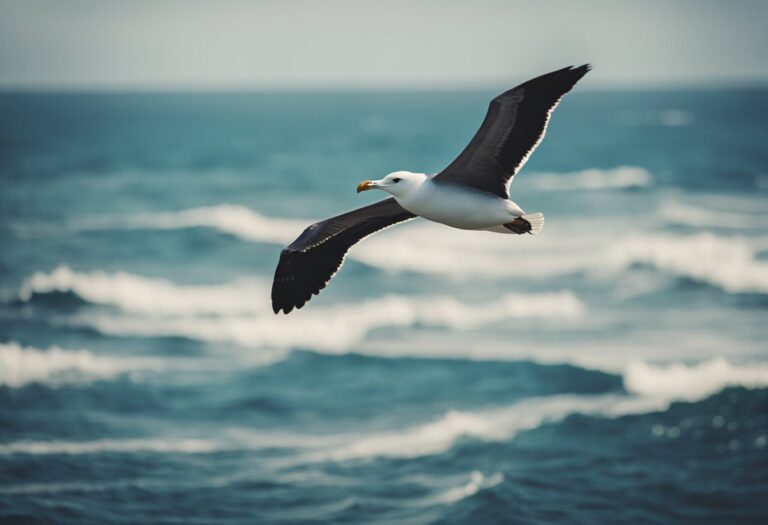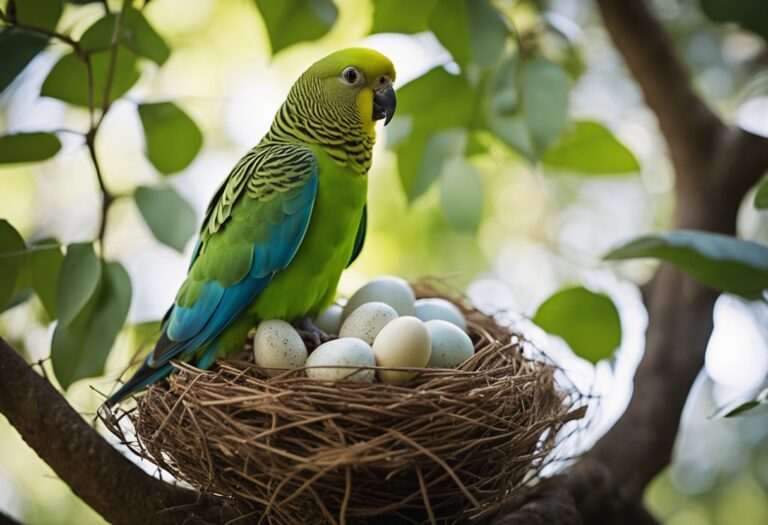Parrots are fascinating creatures with vibrant colors and engaging personalities. One question bird owners often ask this question can parrots eat kale? . Yes, kale is safe and healthy for parrots to eat, offering an excellent source of vitamins and minerals. The leafy green can be a great treat, providing essential nutrients like vitamin A, vitamin C, and calcium, which are beneficial for a parrot’s health.

However, it’s important to know that while kale is nutritious, we should feed it in moderation. Overfeeding greens might lead to digestive problems. Including a variety of other fruits and vegetables alongside kale will ensure a balanced diet for our birds.
When feeding kale and other fresh foods, it’s crucial to avoid anything toxic to our parrots. Foods like chocolate, caffeine, and avocados should never be offered. By being mindful of this, we can create a safe and healthy diet for our feathered companions, enhancing their well-being.
Key Takeaways
- Kale is safe and nutritious for parrots.
- Feed kale in moderation to avoid digestive issues.
- Avoid toxic foods like avocados and chocolate.
Benefits of Kale for Parrots
Kale is a nutritious vegetable that can significantly benefit our feathered friends. It is packed with essential vitamins and minerals while providing a good source of vegetable protein. Exploring these benefits can help us better understand how to integrate kale into a balanced diet for our parrots.
Nutrient Content and Health Advantages
Kale is rich in important nutrients that support the overall health of parrots. It is a robust source of calcium, which is vital for bone strength, and helps prevent calcium deficiency in birds. Additionally, kale provides high levels of vitamin A, crucial for maintaining healthy skin and feathers.
The vegetable protein found in kale aids in muscle development and repair. Calcium in kale further contributes to strong bones, critical for active parrots. The leafy green also contains fiber, which promotes healthy digestion and regular bowel movements, ensuring our birds stay comfortable.
Kale in a Balanced Parrot Diet
Incorporating kale into our parrots’ diet can enhance their nutritional intake. We should serve it in moderation—two to three times a week—either chopped or mixed with other foods. This approach allows parrots to enjoy the varied flavors and textures that kale offers while maintaining a balanced diet.
While kale is healthy, we must avoid overfeeding it due to its oxalic acid content, which can interfere with calcium absorption if consumed in large amounts. Pairing kale with other leafy greens or vegetables, like carrots and squash, can ensure a well-rounded meal. By doing so, we provide diverse nutrients that cater to all our parrots’ needs.
Vitamins and Mineral Benefits
Kale is abundant in vitamins and minerals essential for parrot health. Besides vitamin A, it offers vitamin C, which supports the immune system, keeping our parrots protected from illnesses. The minerals, such as potassium and magnesium, found in kale, also play a role in muscle function and heart health.
The leafy green’s combination of vitamins and minerals ensures that our parrots receive a variety of health benefits. Vitamin K contributes to proper blood clotting, while antioxidants in kale protect their cells from damage. By including kale as part of their diet, we help ensure our parrots remain vibrant and healthy.
Risks and Considerations

When introducing kale into a parrot’s diet, we need to be cautious about certain risks. It’s important to consider both the harmful substances present in some foods and how much kale can be safely fed to parrots.
Harmful Substances in Some Foods
Kale contains oxalic acid, which can impact calcium absorption in birds. This is particularly important for parrots, as calcium deficiency can lead to health issues like weak bones or problems during molting. While oxalic acid is not poisonous in small amounts, it’s crucial to balance kale with other parrot-safe foods that support healthy calcium levels.
Spinach, another leafy green, also contains oxalic acid. Thus, limiting both in our parrots’ diet can help prevent potential negative effects. We should be mindful of serving a variety of greens like romaine lettuce, which doesn’t have this issue. Providing a mix ensures that our parrots get the nutrients they need without increasing the risk of calcium-related health problems.
Appropriate Portion Sizes and Frequency
Parrots can enjoy kale as part of a varied diet, but moderation is key. Offering small, manageable portions ensures that they receive nutrients from kale without overloading on oxalic acid. It’s best to serve kale 2-3 times a week, supplementing with other vegetables to maintain a balanced diet.
Monitoring our parrots’ reactions is essential. If we notice any changes in their behavior or health, we should adjust the portions accordingly. Kale is highly nutritious, but balanced feeding practices help us avoid any potential downsides while supporting overall health.
Feeding Your Parrot a Variety of Foods
Providing a balanced diet for our parrots is essential for their health. We must offer a combination of fruits, vegetables, and commercial foods to ensure our parrots receive all necessary nutrients.
Incorporating Fruits and Vegetables
Vegetables like broccoli and leafy greens are vital for parrots. They provide essential vitamins and minerals. Broccoli, in particular, is a great choice as it is high in vitamin C. Fruits such as apples and berries add variety and are appealing to parrots.
It’s important to remember that certain foods, like kale, should be offered in moderation because they contain compounds that can affect calcium absorption. Parrot-safe foods should always be prioritized to ensure health and safety. For those with an eclectus diet, fresh fruits and vegetables are especially important.
Balancing Commercial and Fresh Foods
A good balance between commercial pellet food and fresh produce is necessary for a well-rounded diet. Commercial pellets often make up about 70% to 90% of a parrot’s diet, offering a consistent nutritional base.
We should complement these pellets with 10% to 30% fresh foods, including a mix of fruits and vegetables like broccoli. This mix ensures that we are not relying solely on pellets and are providing our parrots with the variety they need to thrive. Parrots benefit from such a varied diet, promoting not only nutritional health but also mental stimulation through diverse tastes and textures.
Avoiding Toxic Foods for Parrots
Parrots need a balanced diet, but there are certain foods we must avoid to keep them safe. Some common household foods are harmful and can have serious consequences.
Identifying Unsafe Foods
It’s essential that we recognize foods that are potentially hazardous to our parrots. Chocolate and caffeine are dangerous due to compounds like theobromine and caffeine, which can cause heart problems. Avocado contains persin, a toxin harmful to parrots. Onions and garlic can damage their red blood cells, leading to health issues. Alcohol is obviously dangerous as well, leading to complications affecting the liver and nervous system. Another item to watch for are apple seeds, which contain cyanide and are toxic if ingested in significant amounts.
Consequences of Unsafe Foods
Feeding our parrots these toxic items can have severe implications. Consuming chocolate or caffeine can lead to restlessness, increased heart rate, and even seizures. Ingesting avocado may result in digestive distress and heart complications. Consuming onions and garlic can cause weakness and difficulty breathing due to anemia. Alcohol can lead to alcohol poisoning, causing loss of coordination and liver failure. Swallowing apple seeds in large quantities can be fatal due to cyanide, a potent toxin. To ensure our parrots remain healthy and live long lives, we must be vigilant in avoiding these harmful foods.
Frequently Asked Questions
Parrots can safely enjoy kale as a part of their diet. We will explore its safety, preparation, and potential health benefits for our feathered friends.
Is kale safe for parrots to consume?
Yes, kale is safe for parrots. It is non-toxic and provides essential nutrients. Offering kale in moderation ensures a balanced diet.
What parts of kale are edible for parrots?
Parrots can eat both the leaves and stems of kale. The leaves are rich in vitamins, while the stems add some crunch to their meals.
Can consuming kale affect a parrot’s health?
Kale provides vitamins like A, C, and K. These nutrients support a parrot’s overall health. Overfeeding is not advised, so moderation is key.
Are there any benefits to feeding parrots kale?
Kale offers many health benefits. It boosts the immune system, improves feather quality, and supports bone health. These benefits make it a great addition to their diet.
How should kale be prepared for parrots?
Rinse kale thoroughly to remove dirt and pesticides. You can chop it into small pieces and mix with other foods or serve whole leaves to encourage natural foraging.
What types of green leafy vegetables can parrots safely eat?
In addition to kale, parrots can eat spinach, romaine lettuce, and Swiss chard. Including a variety of greens provides balanced nutrition and keeps meals interesting.






